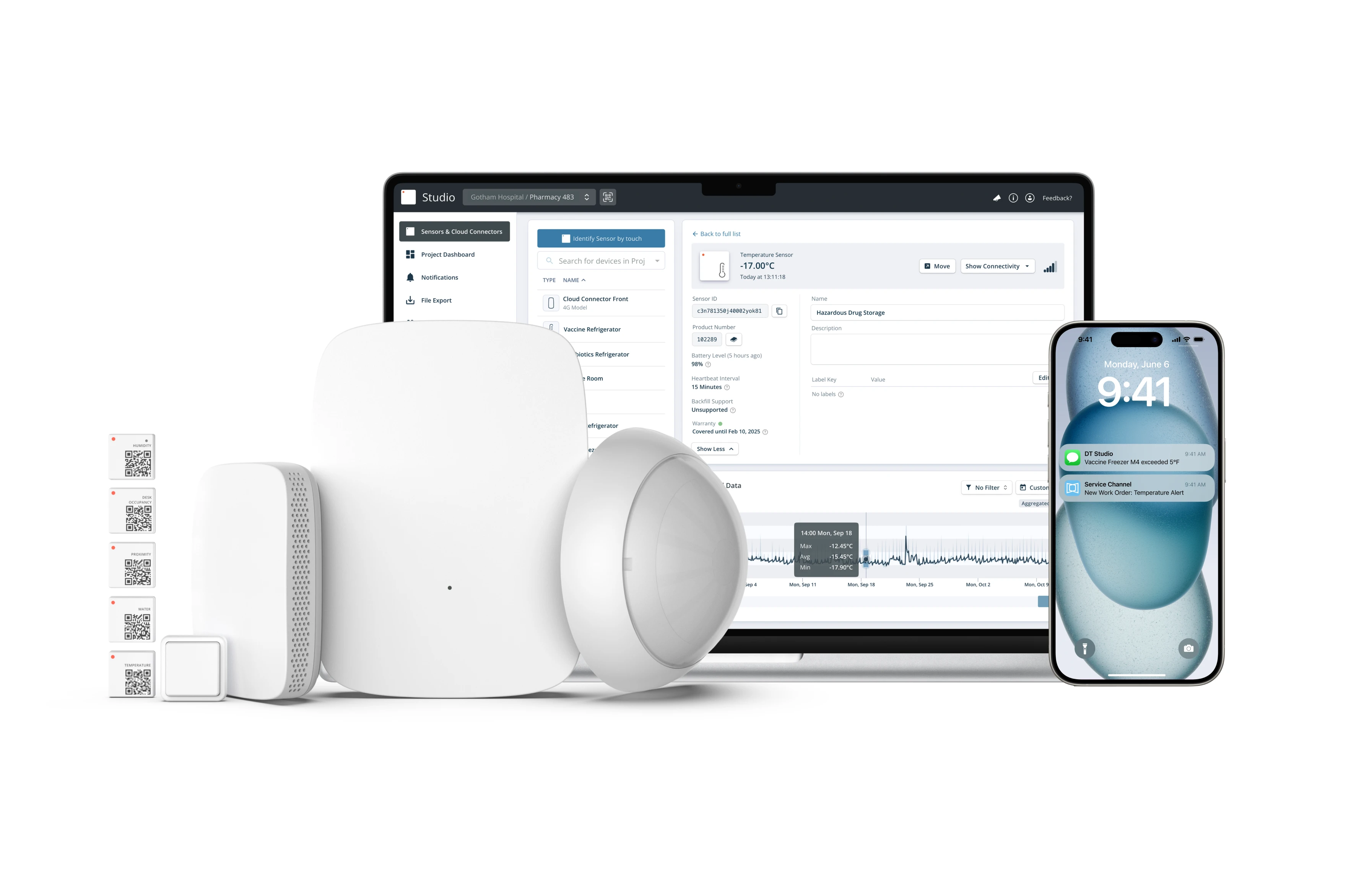How IoT Improves Hygiene & Operational Efficiency in Modern Facilities

Effective cleaning is an integral element of operational efficiency and key to implementing hygiene practices and promoting good health. Cleaning of washrooms, offices, and other spaces must take place regularly, using employees and materials optimally, and in an environmentally friendly way.
For many years, facilities managers had to heuristically plan and optimize their cleaning strategies. In most cases, this resulted in strategies that got the job done but were sub-optimal.
This is bound to change thanks to sensors and Internet of Things (IoT) technologies. Now, cleaning can be optimized based on educated, data-driven decisions instead of guesswork.
What Is Smart Cleaning With IoT?
Internet of Things (IoT) technologies enable the gathering of building data, including data about spaces and assets in offices and washrooms.
IoT technology analytics also enable the analysis of these data to understand the cleaning needs of the spaces and planning cleaning operations accordingly.
This context-aware planning and execution of cleaning operations is conveniently called smart cleaning.
Thus, sensing, data collection, and data analytics are the foundations of smart cleaning.
Prominent examples of sensing and perception for smart cleaning are:
- Occupancy Monitoring: Various sensing devices including temperature sensors, motion sensors, and lighting sensors can be used to measure and track occupancy in rooms and spaces of a facility. Occupancy monitoring provides insights on the usage of the spaces and their cleaning needs.
- Washroom Monitoring and Cleaning Alerts: By processing data from washroom sensors, it is also possible to produce real-time alerts when washrooms must be cleaned.
- Bin Fill Rates Sensing: Facilities managers can monitor the filing rate of waste bins to optimize their emptying schedules. Real-time alerts can be also issued in cases of waste bins that must be urgently cleaned.
- Assets and Cleaners Tracking: Using IoT solutions like beacons and RFID (Radio Frequency Identification) tags, facilities managers can automatically document when cleaning actions in specific rooms took place.
Smart Cleaning Application Examples
Following the collection of sensor data, smart cleaning applications employ data analytics functions to understand the cleaning needs and to create optimal schedules for addressing them. In several cases, real-time data analytics can be also used to indicate urgent cleaning demands and to prioritize them accordingly.
Some of the most prominent IoT-based smart cleaning applications include:
- Smart cleaning digital twins
- Cleaning statistics and reports
- Management of cleaning checklists
- Hygiene standards compliance
Smart Cleaning Digital Twins
Facilities managers can benefit from digital twins’ applications, which create cyber-representations of the physical spaces and illustrate their clean status. Leveraging such digital twins’ cyber-representations, facilities managers can evaluate different cleaning strategies and run what-if analysis about alternative cleaning plans.
Cleaning Statistics and Reports
IoT-enabled applications enable facilities managers to extract various statistics about the efficiency and effectiveness of their cleaning processes. For example, they can extract statistics on the number of completed cleaning tasks, the average cleaning time for specific rooms and spaces, the average response times to urgent cleaning requests, as well as the information about the overall operational efficiency of the cleaning processes.
Management of Cleaning Checklists
Most people are familiar with paper checklists in restrooms and other areas where hygiene is very important. These checklists include information such as the date, the time when the area was last cleaned, as well as the person that performed the cleaning.
IoT technology enables the digitalization of checklist processes since it makes it possible to understand when the rooms were cleaned and by whom and to complete the checklists accordingly. Moreover, it facilitates the traceability of the cleaning processes for regulatory and quality control purposes.
Hygiene Standards Compliance
The documentation of cleaning processes facilitates compliance audits against hygiene standards and provides proof of cleaning. This is very important for facilities managers that must comply with hygiene certification standards and related guidelines (e.g., Occupational Safety and Health Administration (OSHA) mandates.
The need for hygiene standards compliance uses cases has significantly increased following the COVID19 pandemic outbreak, which made facilities managers much more concerned about adherence to stringent hygiene specifications.
Smart Cleaning with Disruptive Technologies Sensors

Disruptive Technologies (DT) provides tiny, energy-efficient, and easy-to-install sensors that support the implementation of the above-listed applications. For instance, DT’s sensors enable the implementation of accurate occupancy monitoring applications, which enable facilities managers to schedule cleaning operations for the rooms and spaces of their properties.
DT provides the means for developing and deploying end-to-end smart cleaning solutions. Sensors come with Cloud Connectors for efficient data acquisition, as well as a visual development environment (i.e. Studio) that reduces the effort of transforming sensor data acquisition to turn-key smart cleaning applications.
Specifically, based on a 360o view of how frequently each room is used, facilities managers are provided with unprecedented opportunities for data-driven operational efficiency. Occupancy monitoring drives optimizations to cleaning resources, including human cleaners, and cleaning materials, which boosts environmental performance and saves costs.
Facilities managers can schedule regular cleaning operations for the most widely used rooms while sticking to the minimum cleaning requirements for rooms that are not frequently occupied. Thanks to DT sensors and IoT technology, occupancy information is captured continually and in an automated way. This is very important during COVID19, which has disrupted the usual occupancy patterns in both corporate and residential buildings.
The benefits of DT sensors-enabled smart cleaning deployments are not limited to operational efficiency and cost reduction. They also extend to the delivery of a clean and pleasant environment to tenants, including public spaces (e.g., restrooms) that evidently meet the strictest cleaning standards. This is a key to maximizing tenants’ comfort, hygiene, and overall satisfaction.

Easy-to-Deploy IoT Sensors & Infrastructure
Get Started



.png)


